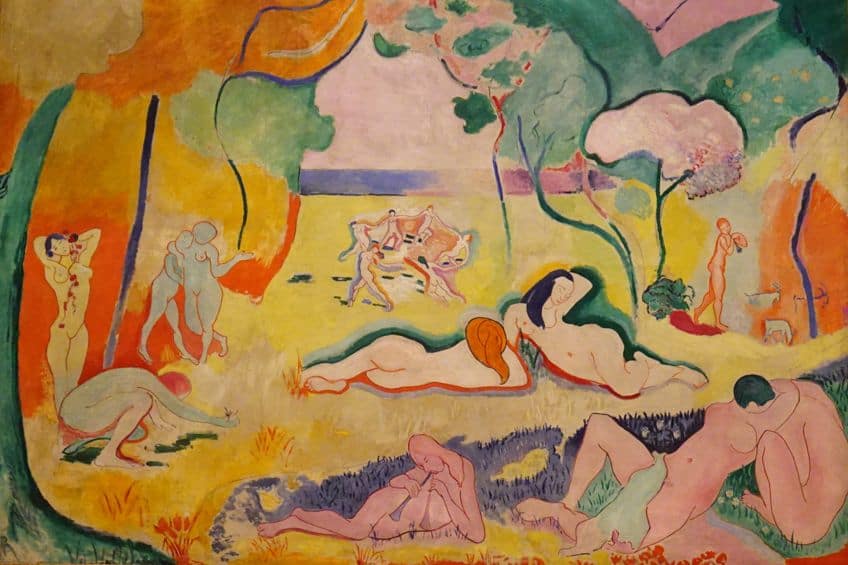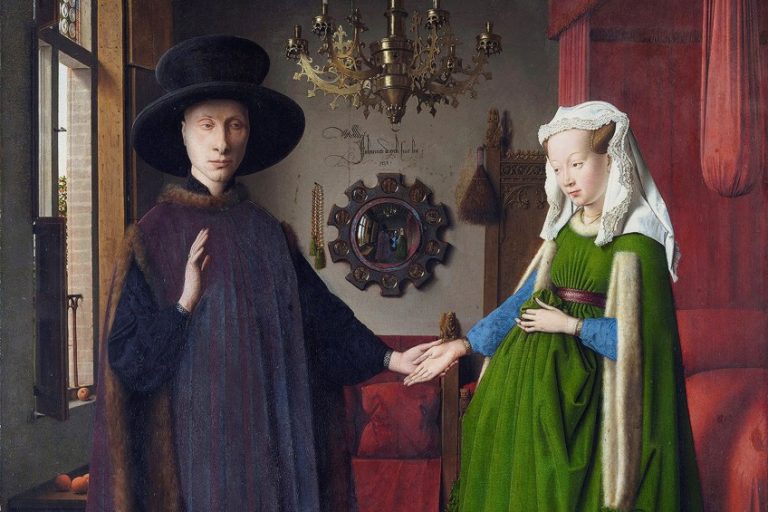“The Joy of Life” by Henri Matisse – A Famous Painting Analysis
Henri Matisse’s The Joy of Life (Le Bonheur de Vivre), painted between 1905 and 1906, is a vibrant and seminal work that marks a pivotal moment in modern art. Known for its bold use of color and fluid, this large-scale painting captures an idyllic and dreamlike landscape where nude figures engage in various leisurely activities. The artwork reflects Matisse’s revolutionary approach to color and form, which would later become central to the Fauvist movement. The Joy of Life not only exemplifies Matisse’s innovative spirit but also his desire to evoke an emotional response through a synthesis of line, color, and rhythm, celebrating the essence of human pleasure and the beauty of nature.
Key Takeaways
- Matisse’s The Joy of Life is a key example of early modernism and Fauvism.
- Its bold use of color and innovative techniques caused significant public debate.
- The painting has left a lasting impact on modern art.
Historical Context
| Artist | Henri Matisse (1869 – 1954) |
|---|---|
| Date Created | 1905 – 1906 |
| Medium | Oil on canvas |
| Genre | Pastoral |
| Period/Movement | Fauvism |
| Dimensions (cm) | 176.5 × 240.7 |
| Series/Versions | Single version |
| Where Is It Housed? | Barnes Foundation, Philadelphia, Pennsylvania, United States |
| What It Is Worth | Not publicly auctioned; significant cultural and historical value |
Henri Matisse’s The Joy of Life (Le Bonheur de Vivre), created between 1905 and 1906, stands as a vibrant testament to the early modernist movement and Fauvism. Recognized alongside Picasso’s Les Demoiselles d’Avignon, this painting was revolutionary for its bold use of color and fluid lines. It portrays an Arcadian landscape teeming with brilliantly colored elements and nude figures, offering a joyous and harmonious vision.
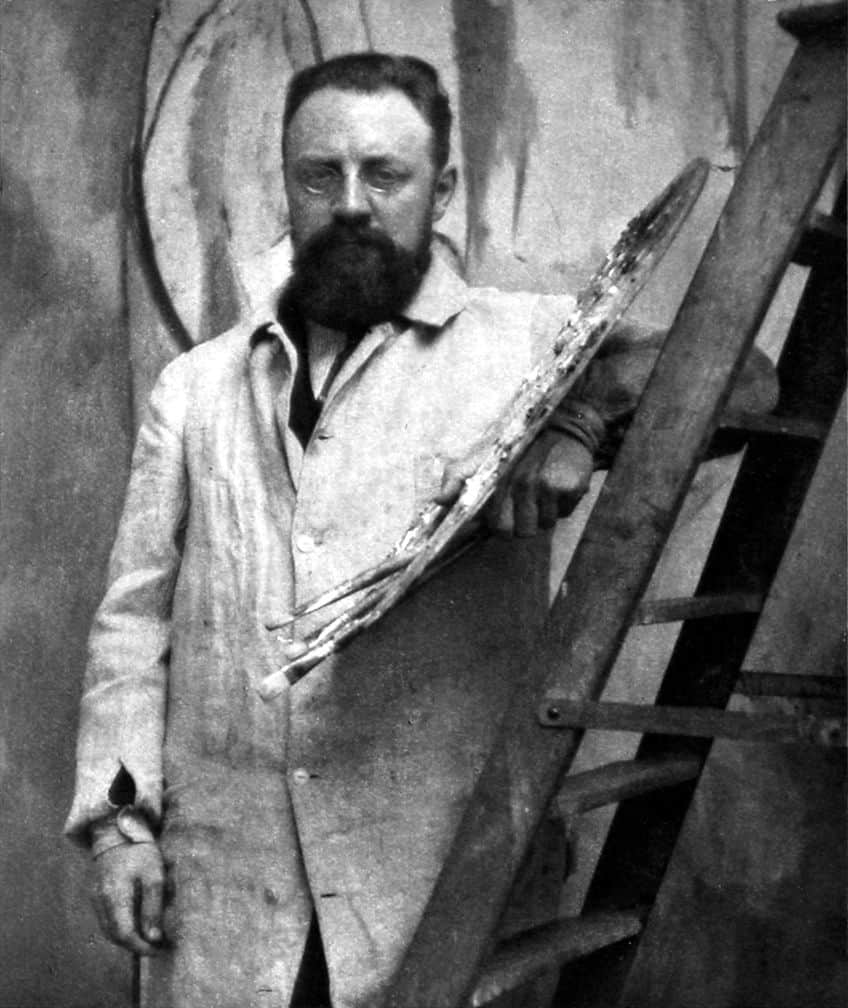
Matisse’s distinctive style in this piece, characterized by spatial distortions and expressive colors, drew both praise and controversy when it was first exhibited. The painting debuted at the Salon des Indépendants in 1906, where its unconventional techniques sparked public debate. It successfully captures the artist’s exploration of form and emotion, solidifying Matisse’s place as a leader in the modern art world. The Joy of Life continues to captivate audiences with its depiction of a serene, yet dynamic world.
Set within a landscape of forest, meadow, and sea, the painting invites viewers to immerse themselves in its exuberant celebration of life. Its lasting impact on modern art is a testament to Matisse’s innovative vision and mastery of his craft.
Fauvist Movement
Fauvism was an avant-garde movement that began around 1905. It emphasized vivid, often non-naturalistic colors and simplified forms. Matisse, along with other artists like André Derain, played a pivotal role in this movement. The term “Fauvism” comes from “les fauves,” meaning “wild beasts,” referring to the group’s bold and unconventional use of color. This period marked a shift from the more subdued tones of the Impressionists, and The Joy of Life is a prime example, using bright cadmium colors and distorted perspectives. This painting was exhibited at the Salon des Indépendants in 1906, causing both excitement and scandal, thus highlighting the bold departure Fauvism made from traditional art forms.
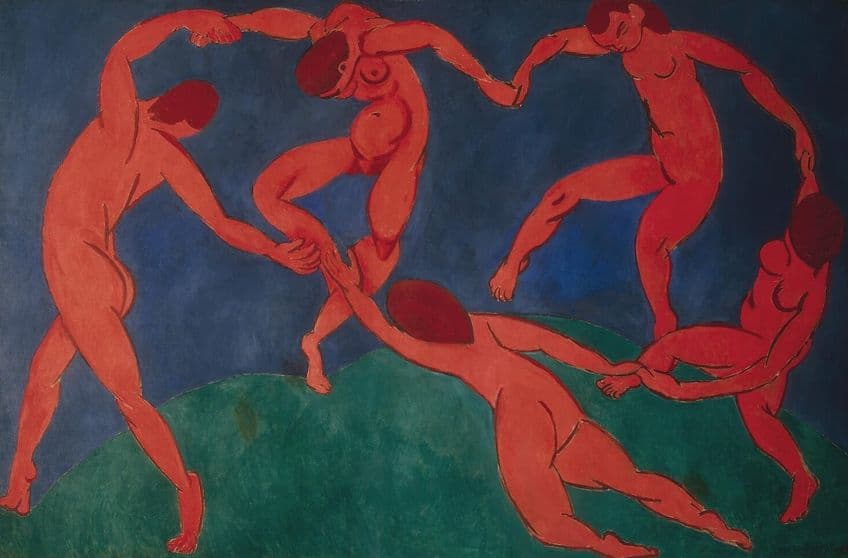
Matisse’s Career
Henri Matisse was born in Le Cateau-Cambrésis in 1869. His career spanned many decades, making him one of the most prominent figures in modern art. By the time he painted The Joy of Life, he had already established himself as a significant artist and a leader of the Fauvist movement. This painting marks a critical point in his career, showcasing his mastery of color and form. Matisse’s Paris studio became a hub for artists and intellectuals, further cementing his influence.
His later works continued to evolve, but The Joy of Life remains a landmark in his career, reflecting his innovative approach and the vibrant artistic atmosphere of early 20th-century Paris.
Artistic Analysis
Henri Matisse’s The Joy of Life, also known as Le Bonheur de Vivre, stands as a notable example of Fauvism. This analysis breaks down the painting into its subject matter, composition and style, use of color, and technique.
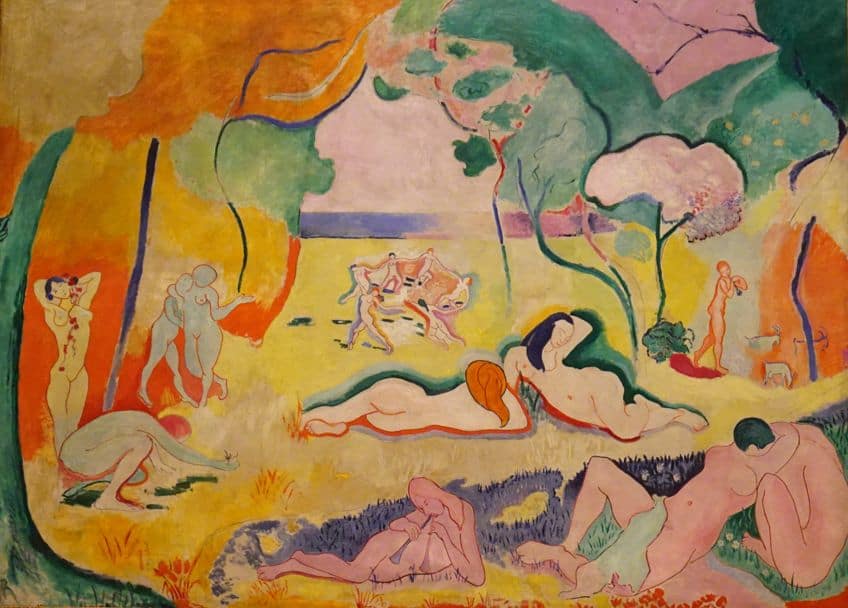
Subject Matter
The Joy of Life presents an idyllic scene filled with nude figures in various poses within a vibrant landscape. The figures appear to rejoice in nature’s embrace, engaging in activities like dancing, playing instruments, and simply resting. Matisse aimed to depict an Arcadian vision, a peaceful and harmonious merging of humans with their natural surroundings.
The scene exudes joy and freedom, capturing moments of pure bliss and harmony.
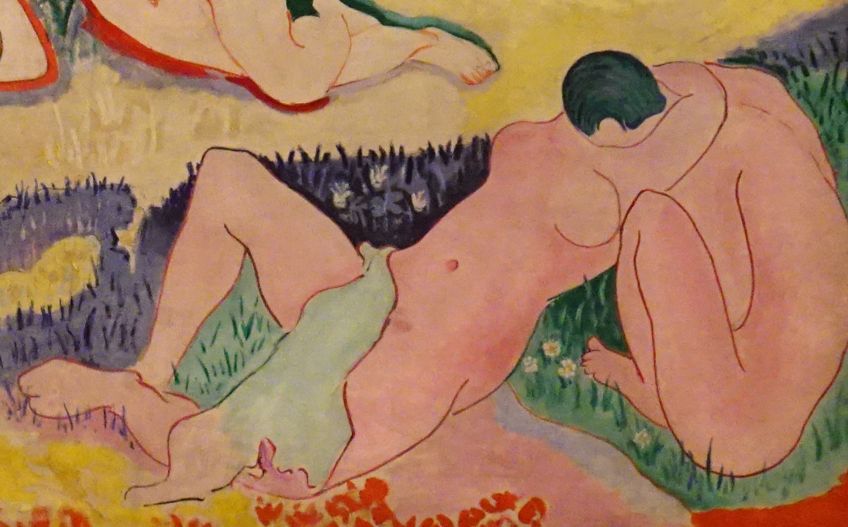
Composition and Style
The composition of The Joy of Life is dynamic and fluid. Matisse arranged the figures in a circular pattern, creating a sense of unity and movement. The large-scale canvas, nearly six feet in height and eight feet in width, enhances its impactful presence.
The absence of linear perspective and the use of spatial distortions make the scene feel both expansive and intimate.

Use of Color
Color is central to Matisse’s work, especially in this painting. He employed vivid, non-naturalistic colors to convey emotion. Bright greens, pinks, yellows, and blues dominate the canvas, each contributing to the overall sense of euphoria.
This use of color was a hallmark of Fauvism, a movement Matisse led, which emphasized the emotional power of color over realistic representation.

Technique, Texture, and Line
Matisse’s technique in The Joy of Life is characterized by broad, expressive brushstrokes and a bold approach to line. The texture varies with areas of thick application contrasting with smoother sections. His lines are fluid and sweeping, helping to unify the figures and the landscape.
This approach highlights the simplicity and purity of form while enhancing the painting’s emotional resonance.
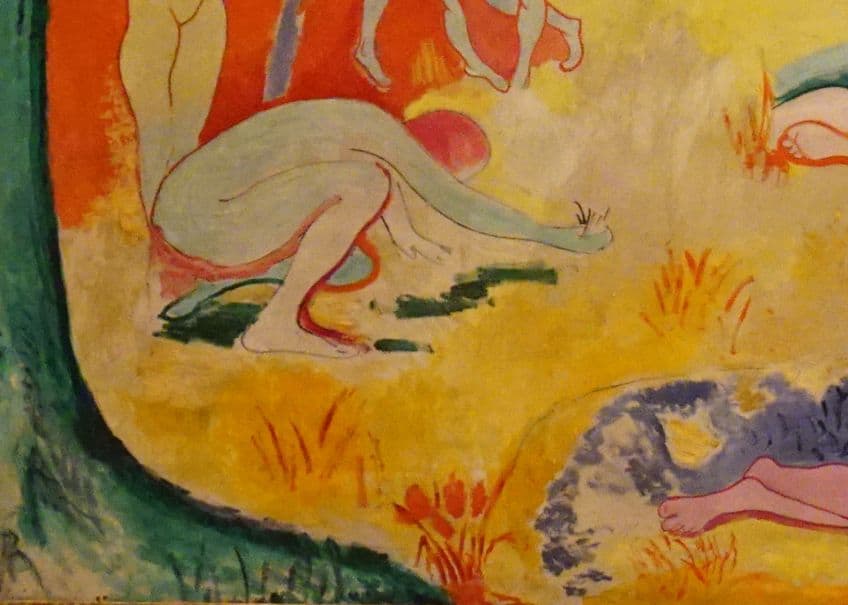
Provenance and Exhibition
The Joy of Life by Henri Matisse has a rich history of ownership and exhibition. This section explores both the painting’s ownership journey and how it has been displayed and shared with the public. Henri Matisse completed The Joy of Life in 1906. Initially, the painting was exhibited at the Salon des Indépendants in Paris. Soon after, it was purchased by the renowned art collector Leo Stein. Leo and his sister, Gertrude Stein, were prominent figures in the early modernist art world and greatly supported artists like Matisse and Picasso. Later, in the 1920s, the painting became part of the collection of Albert C. Barnes. Barnes, an avid art collector, founded the Barnes Foundation in Pennsylvania. This foundation houses one of the greatest collections of impressionist, post-impressionist, and early modern artwork.
Today, The Joy of Life remains part of the Barnes Foundation’s permanent collection, benefiting from the foundation’s dedication to art education and public access.
Display and Loan
The Joy of Life is prominently displayed at the Barnes Foundation in Philadelphia, Pennsylvania. The Foundation’s unique approach to curation places the painting among other masterpieces from the same era, encouraging visitors to explore connections and contrasts between works. The Joy of Life also has been loaned for temporary exhibitions. These loaned exhibits have traveled to various prestigious institutions, including the Museum of Modern Art in New York. Through such loans, the painting reaches a broader audience, allowing more people to appreciate Matisse’s work firsthand.

In terms of rights and reproduction, the painting is managed by Succession H. Matisse and the Artists Rights Society. They regulate the painting’s reproduction to ensure its integrity and proper use. Maintaining these rights helps preserve the cultural significance of Matisse’s masterpiece while allowing it to be shared responsibly.
Cultural Impact
Henri Matisse’s The Joy of Life has left a lasting legacy on modern art and has evoked strong public reactions since its debut. Here, we’ll explore its influence on modern art and public perception. Matisse’s The Joy of Life is regarded as a cornerstone of early modern art. Created between 1905 and 1906, this painting pushed the boundaries of the traditional use of color and form. Pablo Picasso, a contemporary of Matisse, also played a significant role in early modernism with his work, Les Demoiselles d’Avignon.
The two artists often influenced each other, leading to revolutionary changes in artistic techniques.
The Fauvist movement, led by Matisse, emphasized vibrant colors and expressive brushwork. The Joy of Life embodies these principles, showcasing an Arcadian landscape in bold shades. This style greatly impacted future generations of artists, encouraging them to explore new ways to convey emotion and narrative through color and form. The painting’s influence extended to institutions like the Barnes Foundation, where it is prominently displayed. The Artists Rights Society ensures that Matisse’s legacy and rights are preserved, reinforcing the painting’s enduring importance in art history.
Public Perception
When first exhibited at the Salon des Indépendants in 1906, The Joy of Life caused considerable controversy. The public was shocked by Matisse’s use of cadmium colors and spatial distortions, which broke away from traditional artistic norms. This reaction, though initially negative, highlighted the groundbreaking nature of the work. Over time, The Joy of Life gained appreciation and is now celebrated for its revolutionary approach.
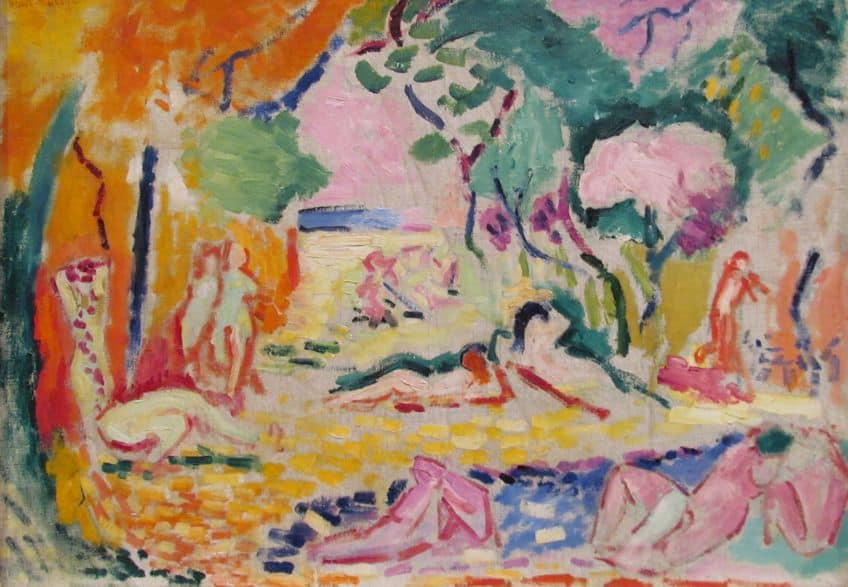
Critics and art enthusiasts recognize it as a masterpiece that captures the essence of joy and freedom. The painting has become a symbol of Matisse’s innovative spirit and his contribution to modern art. Today, The Joy of Life continues to draw attention and admiration in art circles and among the general public. Its bold colors and harmonious composition make it a timeless piece that resonates with viewers globally.
Henri Matisse’s The Joy of Life stands as a testament to the artist’s innovative spirit and his profound influence on the course of modern art. Through its vibrant colors, dynamic composition, and idyllic subject matter, the painting encapsulates Matisse’s vision of art as a source of joy and liberation. The work’s radical departure from naturalistic representation towards an expressive, emotional use of color and form paved the way for the Fauvist movement and inspired generations of artists. The Joy of Life remains a celebrated masterpiece, reflecting Matisse’s enduring legacy in transforming the visual language of the early 20th century and reaffirming the power of art to evoke deep universal human experiences.
Frequently Asked Questions
What Is the Significance Behind the Painting Known As The Joy of Life?
The Joy of Life is significant because it captures Matisse’s vision of an idyllic world. The painting portrays an Arcadian landscape with figures that express joy and freedom, embodying Matisse’s belief in art’s power to bring happiness.
How Is The Joy of Life Analyzed in Terms of Art History?
In art history, The Joy of Life is seen as a groundbreaking work that challenges traditional forms and perspectives. It employs bright, exaggerated colors and distorted spatial relationships, which were revolutionary at the time and set the stage for modernist movements.
Which Artistic Movement Is The Joy of Life Associated With?
The Joy of Life is closely linked to the Fauvist movement. Fauvism is characterized by its bold use of color, fluid brushwork, and a departure from realistic representation. Matisse, as a leader of this movement, used these techniques to evoke emotion and expressiveness in his work.
Why Did The Joy of Life Cause Controversy During Its Time?
When it was first exhibited in 1906, The Joy of Life provoked controversy because of its bright, non-naturalistic colors and unconventional forms. Viewers were shocked by its departure from traditional realism and its bold, expressive style, which challenged the norms of early 20th-century art.
Isabella studied at the University of Cape Town in South Africa and graduated with a Bachelor of Arts majoring in English Literature & Language and Psychology. Throughout her undergraduate years, she took Art History as an additional subject and absolutely loved it. Building on from her art history knowledge that began in high school, art has always been a particular area of fascination for her. From learning about artworks previously unknown to her, or sharpening her existing understanding of specific works, the ability to continue learning within this interesting sphere excites her greatly.
Her focal points of interest in art history encompass profiling specific artists and art movements, as it is these areas where she is able to really dig deep into the rich narrative of the art world. Additionally, she particularly enjoys exploring the different artistic styles of the 20th century, as well as the important impact that female artists have had on the development of art history.
Learn more about Isabella Meyer and the Art in Context Team.
Cite this Article
Isabella, Meyer, ““The Joy of Life” by Henri Matisse – A Famous Painting Analysis.” Art in Context. July 1, 2024. URL: https://artincontext.org/the-joy-of-life-by-henri-matisse/
Meyer, I. (2024, 1 July). “The Joy of Life” by Henri Matisse – A Famous Painting Analysis. Art in Context. https://artincontext.org/the-joy-of-life-by-henri-matisse/
Meyer, Isabella. ““The Joy of Life” by Henri Matisse – A Famous Painting Analysis.” Art in Context, July 1, 2024. https://artincontext.org/the-joy-of-life-by-henri-matisse/.


